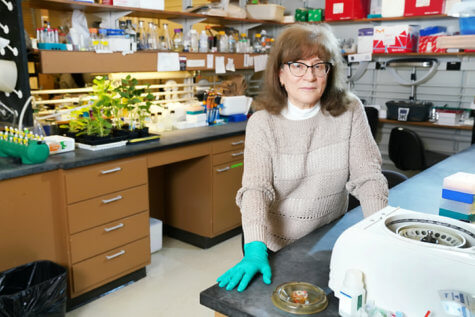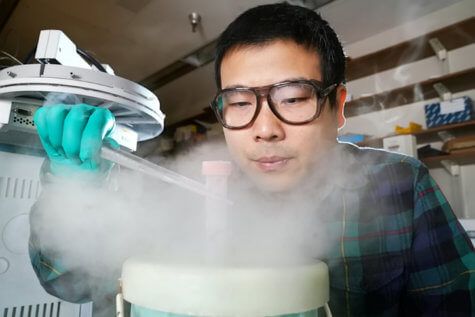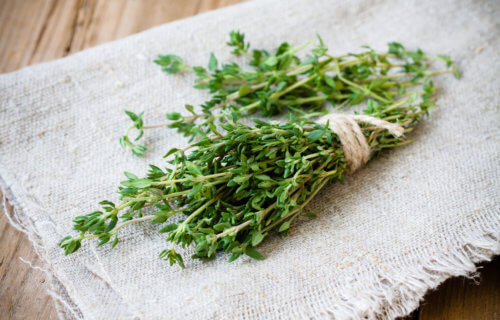WEST LAFAYETTE, Ind. — Could the key to new cancer treatments lie in common Mediterranean herbs? Those who swear by natural remedies may be happy to learn that scientists say they’ve discovered an herbal recipe that could lead to a breakthrough in the fight against cancer.
Cancer remains the second-leading cause of death in the U.S., behind heart disease and ahead of COVID-19, according to recent research. Scientists at Purdue University say that herbs such as thyme and oregano both have an anti-cancer compound that can suppress tumor development. In fact, the key to unlocking the power of these plants is to amplify the amount of the compound created and use it in drug development.
“These plants contain important compounds, but the amount is very low and extraction won’t be enough,” says Natalia Dudarevea, a professor of biochemistry in Purdue’s College of Agriculture, in a statement. “By understanding how these compounds are formed, we open a path to engineering plants with higher levels of them or to synthesizing the compounds in microorganisms for medical use. It is an amazing time for plant science right now. We have tools that are faster, cheaper, and provide much more insight. It is like looking inside the cell; it is almost unbelievable.”
Which common herbs hold the key to cancer treatments?

Thymol, carvacrol, and thymohydroquinone make up the distinctive, Mediterranean flavors of thyme, oregano, and other plants in the Lamiaceae family. As well as being a culinary staple, the herbs are antibacterial, anti-inflammatory and they are rich in antioxidants. Out of the three chemicals, thymohydroquinone piqued the scientists’ interest because of its anti-cancer properties.
In collaboration with scientists from Martin Luther University Halle-Wittenberg in Germany and Michigan State University, the team unearthed the entire molecular recipe of thymohydroquinone. They were also able to map out how its precursor’s thymol and carvacrol were formed alongside other compounds along the way.
“The findings alter previous views of the formation of this class of compounds, called phenolic or aromatic monoterpenes, for which only a few biosynthetic pathways have been discovered in other plants,” says Dudareva, when speaking about finding the molecular recipe or “biosynthetic pathway.”

Adds Pan Liao, a postdoctoral researcher in professor Dudareva’s lab, who is the co-first author of the report: “These findings provide new targets for engineering high-value compounds in plants and other organisms. Not only do many plants contain medicinal properties, but the compounds within them are used as food additives and for perfumes, cosmetics, and other products.”
‘We are always in pursuit of new possibilities’
Now that this pathway is known, plant scientists can now selectively breed plants with these desirable compounds to use or be incorporated into microorganisms like yeast for production. Dr Liao explains that this harvesting method requires a fermentation process which is highly important to the production of food, drinks, pharmaceutical, and biofuels.

The researchers secured a huge $5 million dollar grant from the National Science Foundation, which supports the pioneering study.
Using RNA sequencing and correlation analysis, the researchers screened more than 80,000 genes from plant tissue samples, and then identified the genes needed for thymohydroquinone production. Based on what was known about the compound structure and through metabolite profiling and biochemical testing, the team identified the molecular map.
“More pathways are being discovered now because of the ability to use RNA sequencing to perform high-throughput gene expression analysis,” says Dudareva. “The results of this research also will be useful for biochemistry and plant sciences research of other species of plants. We, as scientists, are always comparing pathways in different systems and plants. We are always in pursuit of new possibilities. The more we learn, the more we are able to recognize the similarities and differences that could be key to the next breakthrough.”
The study is published in the Proceedings of the National Academy of Sciences journal.
South West News Service writer Georgia Lambert contributed to this report.

My Cancer journey might not be relatable to the actual post but I hope it save some ones life, A lot of people are going through chronic disease and some people even think of ending their life but I want you all to know that there is hope. I’m living proof that cancer cells can be cured completely. I did Chemotherapy and my condition didn’t respond to treatment but I never give up because I had faith in God that non-Hodgkin’s lymphoma will take control, My doctor said I had few years or months a list to live but I still didn’t let that discourage me. with all hope lost I started taking nutrition herbs with Acupuncture Formula I purchase from World Rehabilitate Clinic, within a period of (6) six weeks I was recovering. Today I am 100% cured, Now I’m cancer free. It’s also crucial to learn as much as you can about your diagnosis. Seek options.